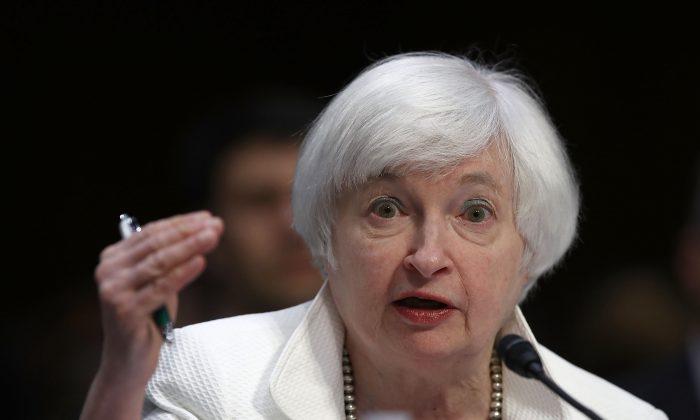News Analysis
No, politics had nothing to do with the Fed’s decision to skip raising interest rates at a meeting that concluded on Sept. 21.
“We do not discuss politics at our meetings, and we do not take politics into account in our decisions. As I said, we’re generally pleased with the progress of the economy, and the decision not to raise rates today and to wait for some further evidence … is largely based on the judgment that we’re not seeing evidence that the economy is overheating,” Federal Reserve Chair Janet Yellen said at a press conference in Washington.
Republican presidential nominee Donald Trump had previously accused the Fed of defaulting on its promise to raise rates four times in 2016 for political reasons and in support of the current Obama administration and Democratic presidential candidate Hillary Clinton.
While the Fed’s constant flip-flopping and ultimate failure to deliver on a promise hurt its credibility, there were some good reasons not to hike rates in the beginning of the year (China, Brexit). At this point, a change in interest rates won’t have an impact on the real economy before the election, but it could avoid a market correction, which seems to be the Fed’s policy not just in election years.

With the markets in mind, the Fed forecasts three rate hikes throughout 2017, one of which may come at the Dec. 14 meeting at the end of this year.
This is how the Fed in its statement Sept. 21 expressed its current position on rate increase: “The Committee judges that the case for an increase in the federal funds rate has strengthened but decided, for the time being, to wait for further evidence of continued progress toward its objectives.”
Back and Forth
To be fair, economic data since the last meeting in July has been mixed. GDP growth came in very weak for the second quarter, rising 1.2 percent annualized instead of the expected 2.6 percent.
Employment indicators were strong in August but haphazard in September, and inflation—according to the Fed’s definition—was weak all along. Manufacturing indicators are signaling that the sector is in recession, but the housing market is on a hot streak.
The mixed data, however, does not excuse the mixed utterances from the Fed, which are confusing and serve to lower its credibility to negative territory.
Yellen said at the annual Jackson Hole meeting on Aug. 26: “In light of the continued solid performance of the labor market and our outlook for economic activity and inflation, I believe the case for an increase in the federal funds rate has strengthened in recent months.”

San Francisco Fed President John Williams said at a meeting of the Council on Foreign Relations earlier this year: “On our full employment mandate, we are basically there. On our inflation mandate, we have made good progress, and I’m optimistic to get to our goal in the next year or two.”
On the other hand, Fed Governor Lael Brainard said in a speech on Sept. 12: “In the presence of uncertainty and the absence of accelerating inflationary pressures, it would be unwise for policy to foreclose on the possibility of making further gains in the labor market. … Disinflation pressure and weak demand from abroad will likely weigh on the U.S. outlook for some time, and fragility in global markets could again pose risks here at home.”
At the bottom of all this jaw-boning is the simple fact that the Fed overplayed its hand last year by pretending that this recovery would last and could withstand four rate hikes in 2016.
After it had realized that both the economy and the financial system are still fragile and haven’t fully recovered from the Great Recession of 2008, the Fed realized it could not raise rates without triggering another recession.
Of course, the people at the Fed could never admit they made a mistake—that privilege is reserved for retired Fed officials like Alan Greenspan, who said, only after he left office in 2006, that he kept rates too low for too long and caused the housing bubble.
If Janet Yellen is honest, we may hear the same words after she retires.






Friends Read Free